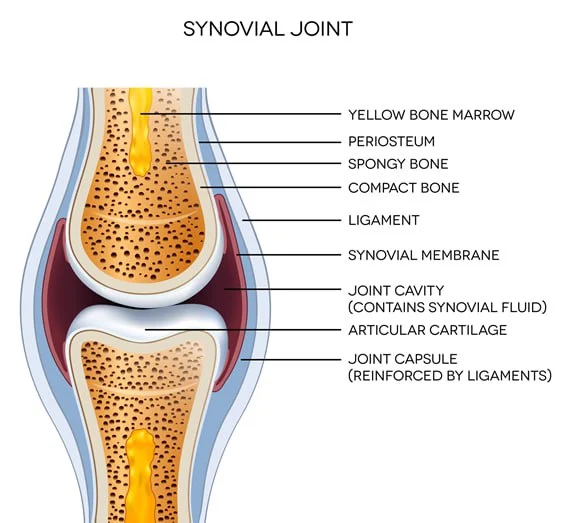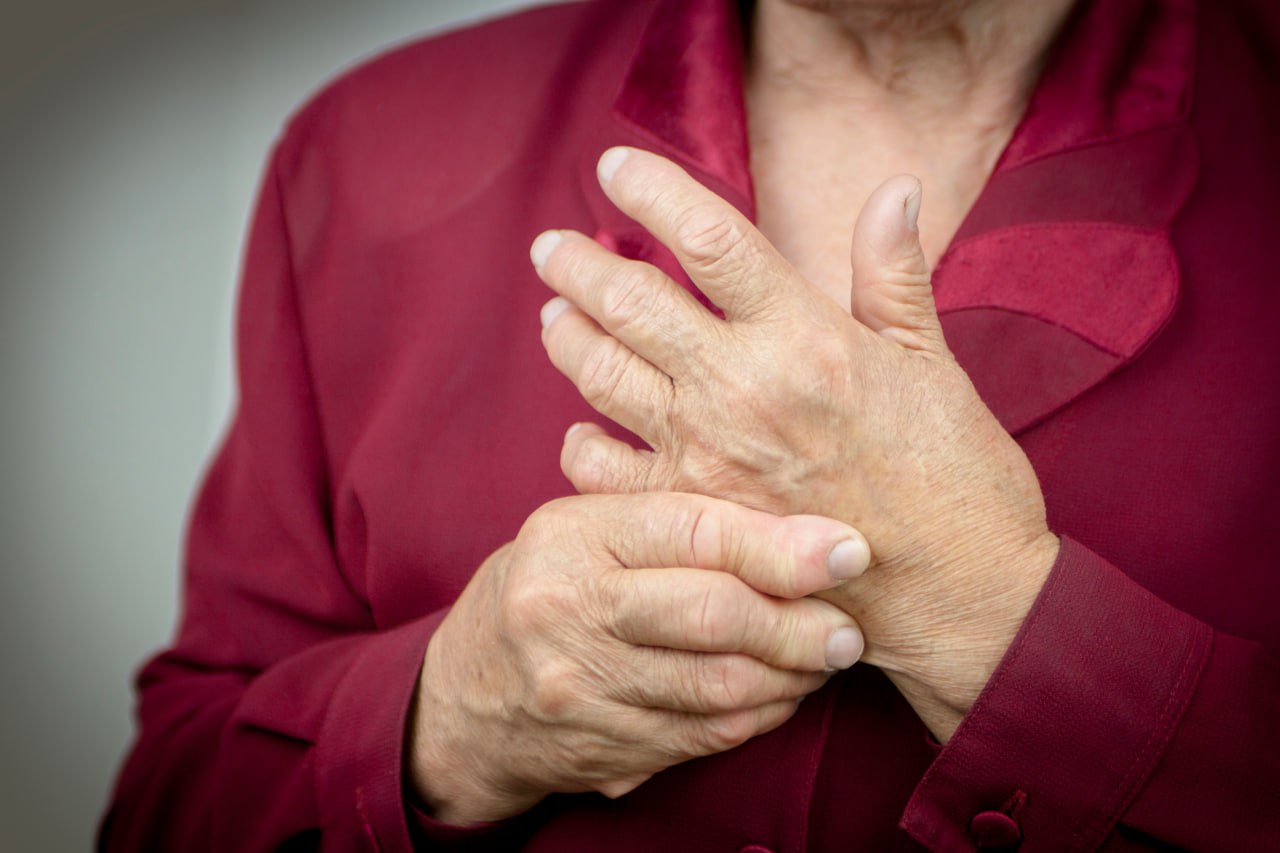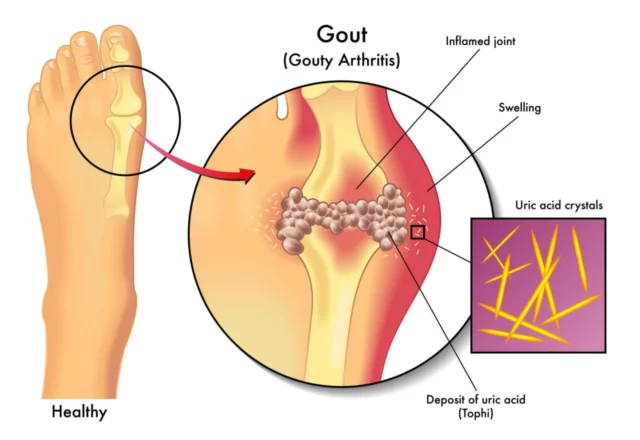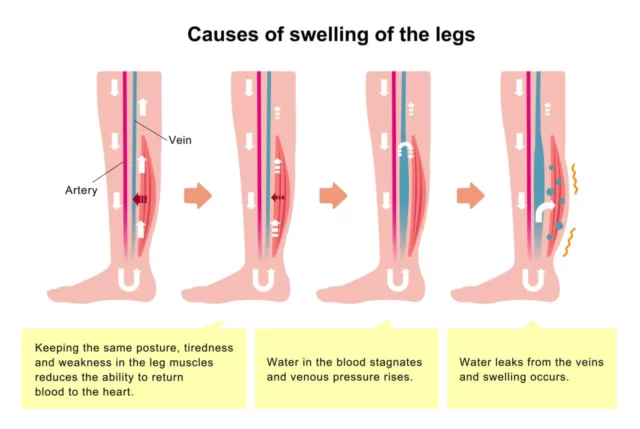Complications Arising From Joint Pain And Swelling
Joint pain refers to persistent or sudden discomfort affecting various joints, such as the knee, hip, shoulder, lower back, and ankles. Each joint is a complex structure connecting bones, supported by tendons, ligaments, muscles, cartilage, and nerves.
These joints facilitate mobility and protect bones from friction and shock. However, injuries, inflammation, and age-related changes can impair their health and function, leading to widespread joint pain and swelling.
Swelling results from inflammation and fluid accumulation in surrounding soft tissues. It accompanies joint pain and stiffness, indicative of traumatic injuries (e.g., dislocations), inflammatory conditions (e.g., tendonitis), or diseases like arthritis.
While minor cases may resolve with home remedies in weeks, chronic joint pain and swelling are debilitating, particularly affecting over 70% of older adults, notably women aged 65-80. These conditions not only cause persistent pain but also impair work capacity and independence with age.
In the UK, musculoskeletal issues contribute significantly to sickness absence, accounting for 20% of lost working days. Chronic joint pain conditions, such as gout, lead 78% of sufferers to miss work annually due to flare-ups.
Financially, arthritis research reveals an average annual healthcare cost of $10,587 for those with joint pain, far exceeding the $3,813 spent by individuals without such conditions.
Understanding your joint condition is crucial for effective treatment planning without relying solely on medications or surgery. Below, we explore common causes of widespread joint pain and swelling.
Conditions Linked To Pain And Swelling In The Joints
Osteoarthritis
Osteoarthritis is a type of arthritis characterized by the degeneration of cartilage, the protective tissue that cushions the joints. Often referred to as “wear and tear” arthritis, osteoarthritis commonly arises from aging, overuse, mechanical issues, poor posture, and obesity.
As the cartilage deteriorates, the bones start to grind against each other during movement. This friction leads to the gradual breakdown of the bones and surrounding tissues, including ligaments and tendons. The persistent inflammation associated with this condition results in joint pain, stiffness, and swelling. Additionally, affected individuals may experience clicking noises, catching sensations, and a significant reduction in mobility over time.
Rheumatoid Arthritis
Rheumatoid arthritis (RA) affects more than 1.3 million people in the US alone, making it the most prevalent form of autoimmune arthritis. This condition occurs when the immune system mistakenly attacks healthy cells and tissues throughout the body.
Gout
Gout is a common and excruciatingly painful type of inflammatory arthritis. It occurs when there is an excessive accumulation of uric acid in the body, leading to the formation of needle-like crystals in the joints.
Normally, uric acid, a byproduct of the body’s breakdown of certain substances, dissolves in the blood and is eliminated through urine. However, when there is an overproduction of uric acid or if the body has difficulty eliminating it, these crystals can begin to damage joint components, including cartilage.
Symptoms of gout typically include intense joint pain and swelling. Additionally, affected joints may feel tender, appear red, and the surrounding skin may be flaky or peel.
Fibromyalgia
Chronic Fatigue Syndrome
Chronic fatigue syndrome (CFS), also known as myalgic encephalomyelitis (ME), is a complex disorder marked by extreme and persistent fatigue.
This condition cannot be explained by any underlying medical cause. The fatigue associated with CFS is not relieved by rest and often worsens with physical or mental activity.
Edema
Edema is a medical condition characterized by an abnormal accumulation of fluid in the body’s tissues, including the joints. While it commonly affects the feet, lower legs, and ankles, it can occur in any part of the body.
This fluid build-up leads to swelling, which in turn causes joint pain. Although aging can increase the likelihood of edema, the condition is typically associated with underlying health issues such as heart disease, liver disease, kidney disease, or any disorder that impairs the body’s ability to eliminate excess fluids.
When To Consult A Medical Professional
Joint pain is a common condition that affects adults of all ages, often going unnoticed or ignored. However, joint swelling, pain, effusion, and loss of movement can be indicators of more serious underlying issues.
It is crucial to recognize when to seek medical advice. Consider making an appointment with your healthcare provider if:
- The pain began shortly after a traumatic injury.
- The swelling, edema, or effusion has caused the joint to appear disfigured or malformed.
- The swelling started with no apparent cause.
- You are experiencing a severe loss of movement, fever, or intense pain.
- The symptoms do not improve within a day or two.
- Your joint condition is interfering with your ability to work and perform daily activities.
Treatment Strategies For Painful Joint Swelling
- OTC Pain Medications: Over 66% of individuals experiencing joint pain turn to over-the-counter pain relievers as their primary treatment approach. Common medications such as aspirin, acetaminophen, and non-steroidal anti-inflammatory drugs (NSAIDs) like ibuprofen are often used to reduce pain during flare-ups. It’s essential to use these medications under the guidance of a healthcare provider.
- Warm and Cold Compress: Warm compresses and hot baths are beneficial for treating old injuries or chronic inflammation by enhancing blood circulation, easing muscle tension, and supporting healing processes. Conversely, for new traumas, cold compresses can effectively reduce blood flow and fluid accumulation in the injured area, thereby minimizing swelling and pain.
- Corticosteroids: Steroids are medications that mimic the effects of naturally occurring hormones in the body. Typically administered via joint injection, steroids function by reducing inflammation and moderating immune system activity over a period.
- Physical and occupational therapy: If your joint condition stems from poor posture, injury, or mechanical issues, collaborating with a physical therapist can provide techniques to reduce excessive joint pressure, enhance your overall conditioning, and promote musculoskeletal health.
- Surgical interventions: If pain medications and physical therapy do not achieve the desired outcomes, healthcare providers may recommend surgical options. Procedures like arthroscopy and joint replacement surgery can repair or replace damaged joint components. However, even with minimally invasive procedures, joint surgery typically involves extended recovery periods and rigorous rehabilitation programs.
The NextPain Care Approach For Pain And Swelling Treatment
Many older adults consider joint pain a normal part of aging and often resign themselves to taking medications daily or living with the limitations imposed by their condition. However, this should not be the case.
Our goal is to provide effective, evidence-based, and minimally invasive treatments tailored to your unique needs. NextPain Care’s approach is grounded in the latest research and guidelines from reputable organizations like the World Health Organization and the American Medical Association.
We prioritize beginning with conservative treatments, including physical therapy, lifestyle modifications, and medication management, to address your pain effectively and with minimal invasiveness. When these minimally invasive approaches prove insufficient, we explore advanced options such as steroid injections, nerve blocks, and spinal cord stimulation to provide more comprehensive pain relief.
Find The Optimal Treatment For Your Symptoms
Relying on pain medications, coping with their severe side effects, and anticipating the need for surgery in the future are daunting prospects – but they are no longer the only options.
The three-level system by NextPain Care is grounded in evidence-based outcomes and data, combining conservative therapies with more advanced interventions for optimal pain relief. Our dedicated team creates a comprehensive, individualized treatment plan for each patient and ensures that our treatments are both effective and performed only when necessary.
This unique combination allows us to provide comprehensive care that addresses the multifaceted needs of our patients.
Conditions We Treat At NextPain Care
Let’s explore the wide range of conditions that can benefit from the transformative effects of NextPain Care, offering renewed hope and enhanced quality of life for countless individuals seeking effective and sustainable relief from their ailments.

Rheumatoid Arthritis Pain Treatment
Rheumatoid arthritis can be a debilitating and painful condition that causes swelling, joint damage, and immobility. NextPain Care offers a comprehensive approach to treating the pain associated with rheumatoid arthritis and the condition itself. We aim to...
Find The Optimal Treatment For Your Symptoms
Relying on pain medications, coping with their severe side effects, and anticipating the need for surgery in the future are daunting prospects – but they are no longer the only options.
NextPain Care offers an innovative, multidisciplinary approach to chronic joint pain and swelling. With a holistic, customized program, you can experience relief and restoration of function.
Don’t let chronic joint pain control your life any longer. Take the first step towards finding the optimal treatment for your symptoms by contacting us.
Could your symptoms be caused by fibromyalgia?





